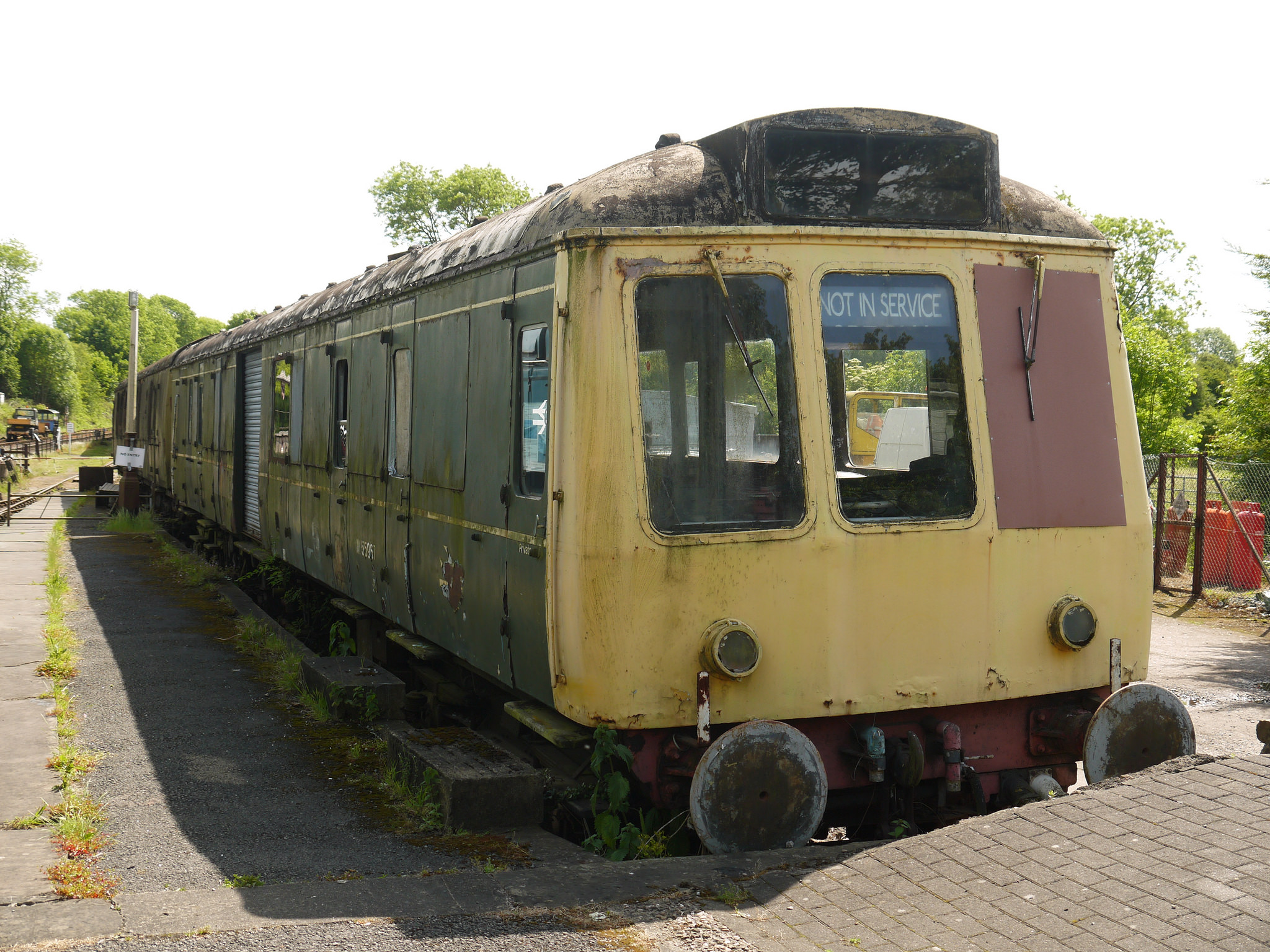ShopDreamUp AI ArtDreamUp
Deviation Actions

Royal Steam Fund
Support my continuous work by contributing to my tip jar. This tier won't include any specific perks, but you will receive my appreciation and a more regular upload schedule. Furthermore, your contribution will help me pay off a loan I had to take on for special medical treatment.
$5/month
Suggested Deviants
Suggested Collections
You Might Like…
Description
Seen in a not particularly good state of health is British Rail Class 127, 51610, basking in the sun at the Midland Railway Centre, Butterley.
The Class 127's were a fleet of first generation DMU's built by British Rail's Derby Works in 1959, used to replace many steam locomotives on local passenger services. 30 units were built in formations of 4-carriages, although they would sometimes run as two-car sets based on demand.
The units were primarily run out of London St Pancras on the Midland Mainline to Bedford, which resulted in them being the first bearer of the "Bed-Pan" nickname. Trains were maintained at Cricklewood depot in north London.
Class 127's were powered by 476hp Rolls Royce C8NFLH engines which were placed underneath the driving cars. These contained a hydraulic transmission (as opposed to the more commonly used mechanical transmission), which meant that the driver of the train had to select gears using a lever in the cab.Top speed of these units was 70mph, which wasn't exactly much better than the steam engines they replaced, but was sufficient for their commuter tasks.
By the end of the 1970's, it was apparent that the design was starting to get very long in the tooth, and the 127's were looking very tired. As part of the London commuter service, these units saw some of the most intensive operation of DMU's in the country, as other DMU's were usually operated away from the London area. Eventually, electrification came to the Midland Mainline between London St Pancras and Bedford in 1982, and 127's were meant to be disposed of that year. However, an industrial dispute between drivers and management regarding Driver Only operation (a particularly troublesome chestnut that still haunts us today), meant that the new Class 317 EMU's were stored at Cricklewood for over a year, and 127's had no choice but to remain in operation. Eventually, the 317's entered operation in 1983, and 127's were disposed of.
It wasn't the end for the 127's however, as some were put to work on the Barking to Gospel Oak line, one of the few unelectrified railways in the London area. These units worked this route until 1984 in two-car formations, being replaced by Class 150's. These units eventually ended up in Birmingham, based at Tyseley depot for work on the Chiltern Mainline out of Moor Street, eventually being replaced, once again, by Class 150's in October 1993.
22 redundant units, however, were converted in 1985 to carry parcels, having their internal seats removed and being fitted with roller-shut doors. Units were formed in two-car sets and were based at Chester depot, being used to work parcels services in the Manchester and Liverpool area. Eventually, these units met their end in 1989, being replaced by locomotive hauled stock.
Today, three units have been preserved in varying degrees of preservation, including one trailer.
The Class 127's were a fleet of first generation DMU's built by British Rail's Derby Works in 1959, used to replace many steam locomotives on local passenger services. 30 units were built in formations of 4-carriages, although they would sometimes run as two-car sets based on demand.
The units were primarily run out of London St Pancras on the Midland Mainline to Bedford, which resulted in them being the first bearer of the "Bed-Pan" nickname. Trains were maintained at Cricklewood depot in north London.
Class 127's were powered by 476hp Rolls Royce C8NFLH engines which were placed underneath the driving cars. These contained a hydraulic transmission (as opposed to the more commonly used mechanical transmission), which meant that the driver of the train had to select gears using a lever in the cab.Top speed of these units was 70mph, which wasn't exactly much better than the steam engines they replaced, but was sufficient for their commuter tasks.
By the end of the 1970's, it was apparent that the design was starting to get very long in the tooth, and the 127's were looking very tired. As part of the London commuter service, these units saw some of the most intensive operation of DMU's in the country, as other DMU's were usually operated away from the London area. Eventually, electrification came to the Midland Mainline between London St Pancras and Bedford in 1982, and 127's were meant to be disposed of that year. However, an industrial dispute between drivers and management regarding Driver Only operation (a particularly troublesome chestnut that still haunts us today), meant that the new Class 317 EMU's were stored at Cricklewood for over a year, and 127's had no choice but to remain in operation. Eventually, the 317's entered operation in 1983, and 127's were disposed of.
It wasn't the end for the 127's however, as some were put to work on the Barking to Gospel Oak line, one of the few unelectrified railways in the London area. These units worked this route until 1984 in two-car formations, being replaced by Class 150's. These units eventually ended up in Birmingham, based at Tyseley depot for work on the Chiltern Mainline out of Moor Street, eventually being replaced, once again, by Class 150's in October 1993.
22 redundant units, however, were converted in 1985 to carry parcels, having their internal seats removed and being fitted with roller-shut doors. Units were formed in two-car sets and were based at Chester depot, being used to work parcels services in the Manchester and Liverpool area. Eventually, these units met their end in 1989, being replaced by locomotive hauled stock.
Today, three units have been preserved in varying degrees of preservation, including one trailer.
Image size
2048x1536px 898.54 KB
© 2017 - 2024 The-Transport-Guild
Comments2
Join the community to add your comment. Already a deviant? Log In
It's a bubble!





























